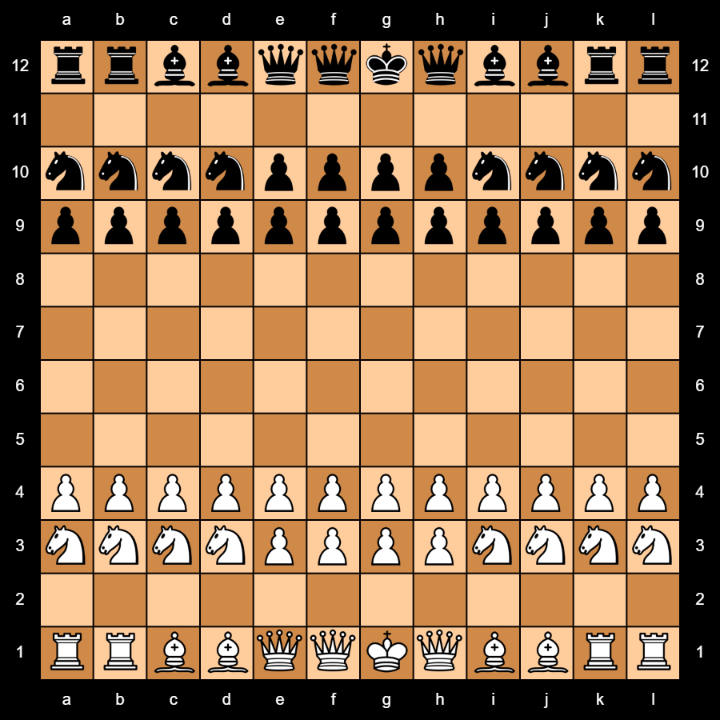SPQR
This chess variant aims to bring the battle formation of chess to perfection.
SPQR was the inscription on the Roman flag, meaning: "The Senate and the People of Rome".
Setup
The setup looks like this:

Pieces
Each player has 16 Pawns, 8 Knights, 4 Rooks, 4 Bishops, 3 Centurions, and a King.
The Centurions move and behave like like a Queen.
The border is the line between ranks 6 and 7. Crossing that line means crossing into enemy territory.
If a King crosses into enemy territory it will get "dictatorial powers", meaning that the King will be allowed to move and capture twice in a row, provided it is not in check.
The King with "dictatorial powers" can also skip its second turn, or can return to its previous position on the second move.
If a King gets "dictatorial powers" it will only be allowed to keep the enemy King at two squares distance.
The four Pawns on the third rank can still get a double move if they land on the fourth rank, the starting position of the 12 Pawns.
Rules
There is no castling.
All chess rules apply, except for the promotion rules.
Pawns promote on the last four lines in the enemy territory.
The first promotion line is reserved for the Knights, the second for the Bishops, the third for the Rooks, and the last one for Centurions (represented as Queens).
If a Pawn reaches a promotion line and does not promote straigt away, it will have to advance to the next promotion line in order to be eligible again for promotion.
The game ends when
- One of the Kings is checkmated
- One of the Kings reaches the last rank in the enemy territory, provided it is not in check.
The stalemate rules also apply.
Notes
The King can also be called Emperor, without changing anything about the rules.
 This 'user submitted' page is a collaboration between the posting user and the Chess Variant Pages. Registered contributors to the Chess Variant Pages have the ability to post their own works, subject to review and editing by the Chess Variant Pages Editorial Staff.
This 'user submitted' page is a collaboration between the posting user and the Chess Variant Pages. Registered contributors to the Chess Variant Pages have the ability to post their own works, subject to review and editing by the Chess Variant Pages Editorial Staff.
By Florin Lupusoru.
Last revised by Florin Lupusoru.
Web page created: 2024-01-30. Web page last updated: 2024-02-03